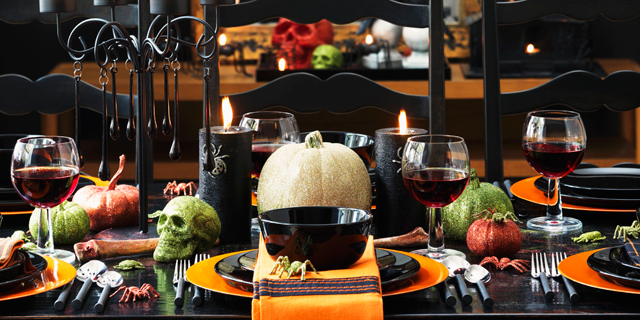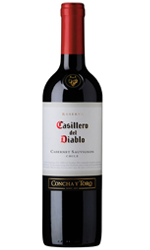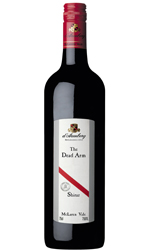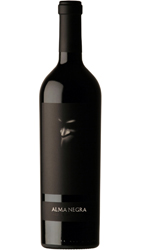Every Halloween you buy scary costumes and candy for the kids, but this year why not buy something fun and devilish for the adults too? Don’t get tricked into buying a cheap wine with a kitschy name—give yourself and your friends a treat and buy well-crafted wines with a little bit of history and a real story behind the name. But first, a history lesson (with a treat at the end).
The three-day practice of celebrating Halloween began in 609 AD. Back then it was called All Hallow’s Eve, because it fell on October 31, the evening before All Hallow’s Day (November 1). The third day, November 2, was known as All Soul’s Day. In the 1300s, these three days became holy days of obligation in the Catholic Church and town cries dressed in black reminded parishioners to pray for the dead. The devout began the practice of visiting the graves of their loved ones with offerings of food and wine. In many countries this tradition of feeding the dead continues. In France family members pour big bowls of milk, while in Spain, women bake Huesos de Santo or bones of the dead to leave on the graves. In Mexico, November 1 is traditionally the day to remember deceased children and infants and it is called Dia de los Inocentes or Dia de los Angelitos, while November 2 is known as Dia de los Muertos.
On the Day Of The Dead, families visit the cemetery to clean, decorate, and build private altars with photos of their relatives, keepsakes, memorabilia, flowers, and even the favorite foods of the departed as ofrendas. While the offerings are always respectful, Mexican culture allows for a bit of fun when remembering the dead and celebrations often turn into multigenerational family fiestas. Whether you are celebrating on Halloween night or throwing a Day of the Dead party, choose wine with an eerie name that you won’t be scared to drink!
Next, five wines that will drive you mad…
[pagebreak]
Casillero del Diablo: Don Melchor Concha y Toro effectively stopped his employees from stealing his best wine in the late 1880s by telling them that he saw Satan hiding among the barrels of what he eventually renamed The Devil’s Cellar. Casillero del Diablo Cabernet Sauvignon is produced in Chile and has great aromas of blackberries, cinnamon, and stewed fruits. It has beautifully balanced flavors and acidity and a nice long finish. Perfect with asado.
Dragon’s Lair: This big fruity Shiraz from Bellingham Winery in South Africa is named for the legend of Saint George who freed a damsel in distress by slaying the dragon that held her in captivity. It will set your palate free when paired with Tequila-marinated hangar steak.
Dead Arm Shiraz (left): Fourth generation winemaker Chester Osborn had a little bit of fun in naming his powerful Shiraz. His wine comes from the Adelaide Hills of Australia and is made from healthy grapes that are grown on a fungus-infected vine, known locally as a “dead arm.” The fungus reduces the number of grape clusters but intensifies the flavor, thus making this one delicious wine. It’s brimming with flavors of ripe blackberries, black currants, black plums, and just a touch of violet in the finish. Get out your biggest pot and make a fiery chili because this wine is big enough to stand up to lots of spice.
Killerman’s Run: Australian winemaker Kevin Mitchell told us that Kilikanoon Killerman’s Run Shiraz is named after a local hermit who played the banjo and made his own wine. “His friendly ghost still visits the vineyard, and if you listen real close, you can still hear the banjo.” It has delightful notes of dark fruits, black raspberry, and just a touch of dark chocolate in the nose and in the mouth. Try this Shiraz with this Mexican-style meatloaf.
Alma Negra (left): Translated literally as black soul, Alma Negra is the creation of winemaker Ernesto Catena, son of the iconic Nicolas Catena of Argentina. It’s big and bold with flavors of black cherry, violet, jasmine, and lavender. It’s the perfect accompaniment to flaky and tasty Argentine empanadas.





![Making Mealtime Matter with La Familia: Easy Sofrito [Video]](https://thelatinkitchen.com/wp-content/uploads/2015/10/sofrito-shutterstock__0-500x383.jpg)
![Easy Latin Smoothies: Goji Berry Smoothie [Video]](https://thelatinkitchen.com/wp-content/uploads/2015/12/goji_berry-shutterstock_-500x383.jpg)
















![Fun and Fast Recipes: Fiesta Cabbage Salad [Video]](https://thelatinkitchen.com/wp-content/uploads/2015/11/fiesta_cabbage_slaw-shutterstock_-500x383.jpg)









